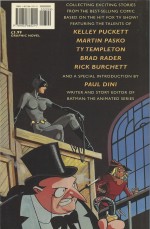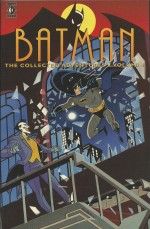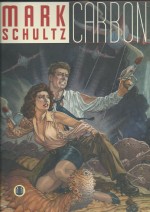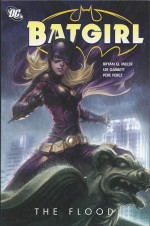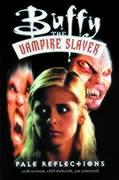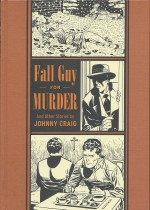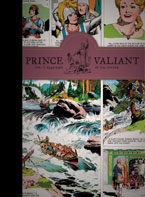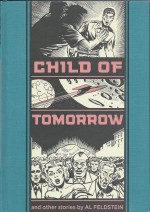

By Junko Mizuno (jaPress/Last Gasp)
ISBN: 978-0-86719-743-3
If you’re over a certain age or have eclectic tastes in art and music you might feel a pang of nostalgia at the work in this second intriguing, coyly adult collection, featuring Manga sensation Junko Mizuno’s most subversively compelling creation.
Since her emergence in 1995, the author has become renowned – perhaps infamous – for mixing childlike innocence with grim, gory action and unwholesome or stridently clashing, wildly inappropriate content in a sub-genre now dubbed Gothic or Noir kawaii (where kawaii describes cutely drawn protagonists and subjects).
Moreover the skewed sensibilities of her work in such Manga as Cinderalla, Hansel & Gretel, Princess Mermaid, Pure Trance and Momongo no IsshÅ (the Life of Momongo) has exploded out of the comics ghetto to be embraced by a larger audience with art exhibitions (Heart Throbs and Tender Succubus), art-books (Hell Babies, Collector File and Flare) and high-end designer toys for adults which include plush animals, vinyl figures, stationery, postcards, stickers, original art T-shirts and even a line of condoms and erotic paraphernalia.
Her shojo (“stories for girlsâ€) derived style also borrows heavily from the iconic imagery of the 1960s and early 1970s, particularly the Graphic Psychedelia which grew out of Pop Art, with huge eyed, large-headed poppet girls, drawn to look young or, more accurately, actively, innocently, illicitly under-aged: living in simplified environments where detail is reduced to bare minima.
Her stories are always sharply at odds with her drawing style, like cartoons for toddlers involving unpleasant visits to the gynaecologist or being consumed by cannibals, and much of her material incorporates splashy full colour despite the overwhelming preponderance of black and white material in Japan.
Once Upon a Time on a cute pink planet invisible to human eyes lived a race of beautiful naked young women and one very lovely, placidly carnivorous purple Space Hippo.
Of course, there was also Pelu: a fluffy excitable ball of fuzz who incessantly questioned the idyllic existence. From the Hippo Pelu learned of Earth where there are two sexes, and of his own origins, and immediately the little puffball determined to visit the planet of humans and father a baby so he won’t be alone any more…
The journey led to a number of salutary adventures for the naive ET, whose venerable progression from wide-eyed Innocent to sexual enlightenment did not provide contentment or that longed-for child.
On Earth the fluffy naif closely observed a host of human interactions whilst always politely asking if anyone would like to be made pregnant – but love, hate, jealousy, pride, ambition, self-loathing and even murder were all hard to grasp until Pelu befriended hobo alcoholic Su-San who became a valued comrade and teacher…
This second monochrome tome continues the elucidatory explorations and peripatetic pursuits of the lonely heart “ladâ€, beginning with ‘Bubble Princess Transformation’ wherein the amorphous alien becomes enamoured of a beautiful sex-worker in the final stages of gender reassignment and presides over a rare happy-ever-after rather than the regulation “happy ending†after which the 2-part ‘I Married a Puppet Master’ delves into even stranger territory.
Good wife Murako spends her idle moments knitting glove puppet friends, but is increasingly worried that husband Mamoru‘s job is affecting his health. She is utterly unaware one of her creations has befriended the oddly similar new neighbour Pelu…
However, when Mamoru is callously transformed into a living doll by his bosses at Big Pharmaceutical, Murako is shocked into stunned inactivity… but not knitwear nightmare Koro who recruits Pelu to help obtain a brutal revenge…
Back on the streets again Su-San and Pelu are then approached by a sexy hostess for one of those unique television competition game-shows in ‘Surprise! Japan’s New Record’ but, after the little visitor’s stunning victory leaves them flush for a change, things get very odd…
Another 2-parter, ‘The Secret of the Flower Garden’ finds the spherical sex-pot approached by lovely Tsubomi with a rather unlikely proposition. Soon Pelu is regularly servicing her, her mother and grandmother, in a secret villa beneath a soda factory, just helping a family of hereditary nymphomaniacs, blithely unaware that understanding man of the house Kiyoshi is a bit of an amateur film-maker…
Eventually, still without progeny, Pelu is discarded for a fresher, less exhausted replacement and returns to best buddy Su-San, just in time to fall in love again…
‘Sigh of the Kappa Girl’ is a bittersweet tale of unrequited love as poor Kappa-ko is ditched by boyfriend and prospective husband Makoto. His family want their boy to marry someone else – anyone else actually – as they have an old-fashioned prejudice against Kappas.
You can see their point of view: although she is sweet and sad and gentle, most of the magical water demons are mischievous, cunning flesh-eaters, living in the city’s tainted rivers and watercourses. Seeking solace with Pelu, the betrayed girl steals his heart away but soon leaves him for another…
The saga takes another strange turn in ‘The Niece from Outer Space’ when a young princess from the pink planet comes to visit her far-voyaging uncle. Melu is even more innocent than Pelu but too soon adapts to Earth’s ways – especially after gorging on human food makes her body grow up faster than her mind. Soon she’s hanging out with the wrong crowd (homicidal quintuplets and their abusive, exploitative father) and Pelu is too late to prevent a miraculous tragedy…
This extraordinary collection concludes in poignant heartbreak as Pelu and Su-San become ill on the streets and the little stranger loses his best friend forever to the ‘Homeless Paradise’. The only glimmer of light in the sobering tale for Pelu is meeting Su-San’s estranged daughter Noriko Saotome and learning something of his forever-gone companion’s sorry past…
Little Fluffy Gigolo Pelu continues the potentially shocking saga of an incorrigible innocent abroad, with seductive fantasy underpinned by a subtle sinister subtext and an overt narrative informed by the naivety of “Swinging Sixties†sexuality.
Everything, especially the legion of pretty  girls, is drawn in the style of early Playboy icons, in the brand of  cartoon stylisations that featured in movie title sequences like What’s New, Pussycat? or Yellow Submarine. Anybody British who remembers the children’s animation Crystal Tipps and Alistair, or the hippo from Rainbow, will feel a frisson of nostalgia – which is of course the point. The art is an irresistible velvet trap designed to reduce readers to a receptive state in which the author can make telling points about contemporary culture.
By co-opting children’s entertainment Mizuno addresses fundamental aspects of human existence in a form designed to shock, subvert, upset and most importantly provoke. So, if some thought on the readers’ part extends beyond our visceral gut-reaction to nude innocent girls and the idealistic purity that used to be associated with such imagery, then she’s done her job…
This is a supremely edgy fantasy with a lot to say about society and relationships – similar to but utterly different from Robert Heinlein’s groundbreaking social satire Stranger in a Strange Land, and will one day I’m sure, have just as much impact.
© 2004, 2013 Junko Mizuno. All Rights Reserved.
See also www.MIZUNO-JUNKO.com


